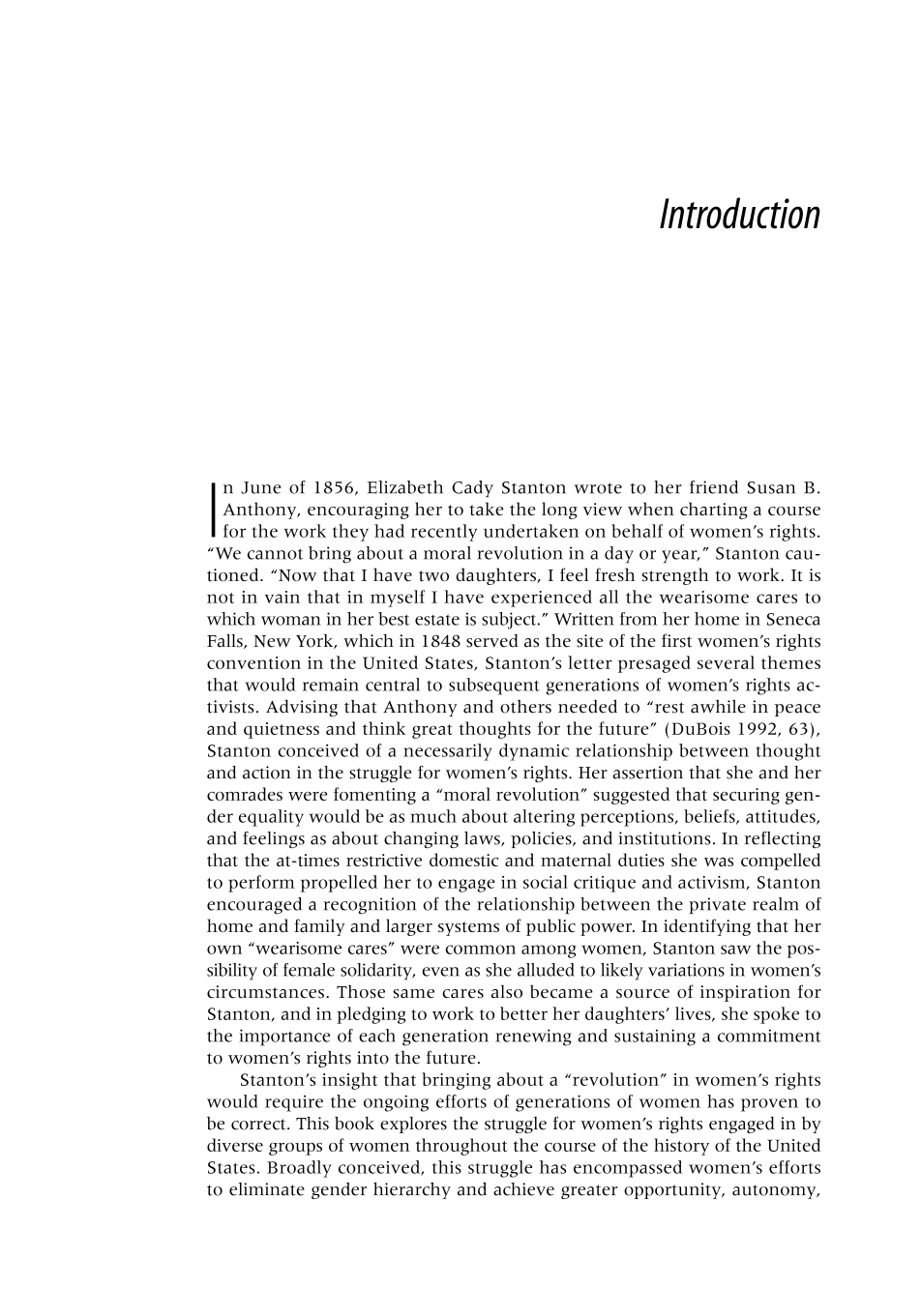Introduction
Ifor
n June of 1856, Elizabeth Cady Stanton wrote to her friend Susan B.
Anthony, encouraging her to take the long view when charting a course
the work they had recently undertaken on behalf of women’s rights.
“We cannot bring about a moral revolution in a day or year,” Stanton cau-
tioned. “Now that I have two daughters, I feel fresh strength to work. It is
not in vain that in myself I have experienced all the wearisome cares to
which woman in her best estate is subject.” Written from her home in Seneca
Falls, New York, which in 1848 served as the site of the first women’s rights
convention in the United States, Stanton’s letter presaged several themes
that would remain central to subsequent generations of women’s rights ac-
tivists. Advising that Anthony and others needed to “rest awhile in peace
and quietness and think great thoughts for the future” ( DuBois 1992, 63),
Stanton conceived of a necessarily dynamic relationship between thought
and action in the struggle for women’s rights. Her assertion that she and her
comrades were fomenting a “moral revolution” suggested that securing gen-
der equality would be as much about altering perceptions, beliefs, attitudes,
and feelings as about changing laws, policies, and institutions. In reflecting
that the at-times restrictive domestic and maternal duties she was compelled
to perform propelled her to engage in social critique and activism, Stanton
encouraged a recognition of the relationship between the private realm of
home and family and larger systems of public power. In identifying that her
own “wearisome cares” were common among women, Stanton saw the pos-
sibility of female solidarity, even as she alluded to likely variations in women’s
circumstances. Those same cares also became a source of inspiration for
Stanton, and in pledging to work to better her daughters’ lives, she spoke to
the importance of each generation renewing and sustaining a commitment
to women’s rights into the future.
Stanton’s insight that bringing about a “revolution” in women’s rights
would require the ongoing efforts of generations of women has proven to
be correct. This book explores the struggle for women’s rights engaged in by
diverse groups of women throughout the course of the history of the United
States. Broadly conceived, this struggle has encompassed women’s efforts
to eliminate gender hierarchy and achieve greater opportunity, autonomy,

















































































































































































































































































































































